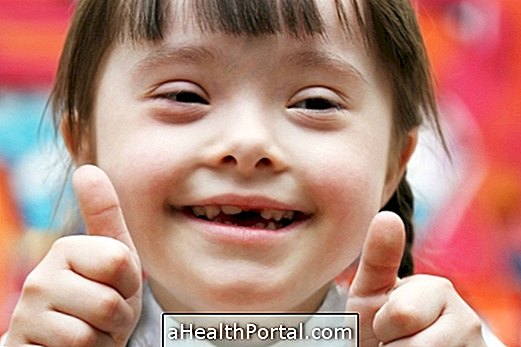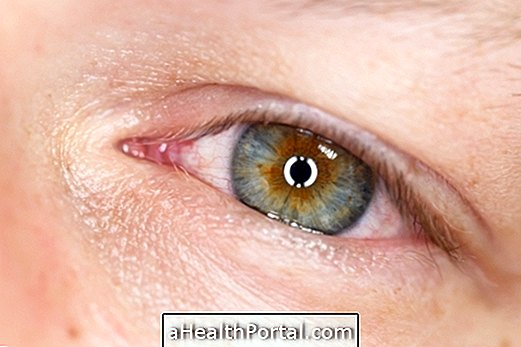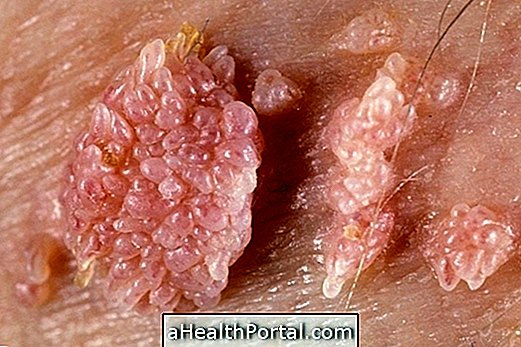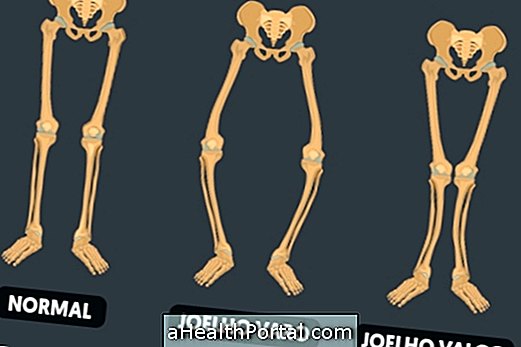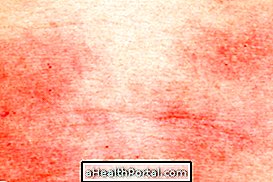Some factors like sinusitis, migraine, headache, stress, muscle tension or tired sight can cause forehead pain that can be accompanied by other symptoms like headache, pain in the eyes, nose or neck. The treatment depends on the cause that is at the origin of the pain, but is usually done with analgesics.
1. Sinusitis
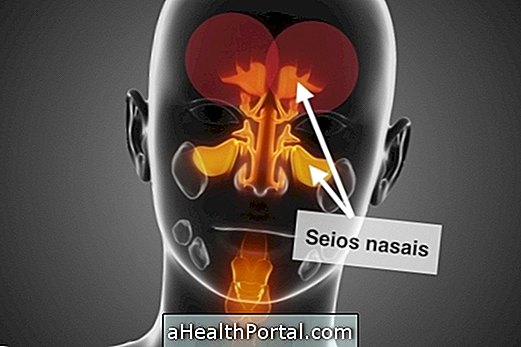
Sinusitis is an inflammation of the sinuses that causes symptoms such as headache and a feeling of heaviness in the face, especially in the region of the forehead and the cheekbones, where the sinuses are located. In addition, symptoms such as sore throat, nose, difficulty breathing, bad breath, loss of smell and runny nose may also occur.
Generally, sinusitis is very common during an influenza or allergy, because in these situations it is more likely that bacteria develop in the nasal secretions, which can become trapped inside the sinuses. See the types of sinusitis and how the diagnosis is made.
How to treat
The treatment consists of the application of nasal sprays, which help relieve the sensation of stuffy nose, anti-flu remedies, which help relieve the feeling of pressure on the face and headache and in some cases antibiotics may be used.
2. Migraines

Migraine causes symptoms such as a strong, constant and pulsating headache that can occur only on the right or left side and radiate to the forehead and neck, and can last for about 3 hours, but in more severe cases it can remain for 72 hours. In addition, symptoms such as vomiting, dizziness, nausea, blurred vision and sensitivity to light and noise, sensitivity to odors and difficulty concentrating can still occur.
How to treat
Generally, the treatment for migraine consists of taking medicines like Zomig, Migretil or Enxak, for example, that help relieve pain. If nausea and vomiting are very severe, metoclopramide or droperidol may be needed to relieve these symptoms. Learn more about treatment.
3. Tension headache

Tension headache is usually caused by stiff muscles in the neck, back and scalp, which can be caused by factors such as poor posture, stress, anxiety or tiredness.
Generally, the symptoms associated with a tension headache are pressure on the head, pain that affects the sides of the head and forehead and excessive sensitivity in the shoulders, neck and scalp.
How to treat
To relieve this kind of pain, the person should try to relax by doing a massage on the scalp or taking a warm and relaxing bath. However, if the headache does not improve it may be necessary to take painkillers or anti-inflammatories such as paracetamol, ibuprofen or aspirin for example. See other ways to relieve tension headache.
4. Looking tired

Forcing your eyes a lot during the day on the computer, on the cell phone or reading for many hours at a time can cause pain in the eyes and the front of the head, which can be radiated to the forehead over the eyes and also cause some muscle tension in the neck.
In addition to the tired sight, other conditions such as glaucoma or ocular cellulitis can also cause pain in the front of the head.
How to treat
To avoid getting tired, you should reduce the use of the computer, television and cell phone and prefer yellowish light, which is more like sunlight and does not hurt the eyes. For people who work a long time at the computer, it can help to look at a distant point every hour and blink several times the eyes, since when you are in front of the computer, there is a natural tendency to blink less.
In addition, exercises and massages can be done to help improve the symptoms associated with tired sight. Here's how to do massages and exercises for tired eyesight.
